Church di San Giovanni Battista
0 comments
To visit
The premises are adjacent to the Church of S. Giovanni Battista - protector of Gizzeria - probably built in 1500 and rebuilt after the 1638 earthquake. The coat of arms of the Knights of Malta appears on the central altar. The Church houses 2 frescoes by Grillo, depicting Salomè, the birth and beheading of John the Baptist; a poorly painted picture attributable to Maratta depicting the beheading of the Baptist; and a statue of St. John the Baptist from the 1700s.
The inscriptions in the Cabreo of 1655 testify that this church already existed in the century preceding that date. A legend tells that a "pilot" found himself in danger in the waters of S. Eufemia del Golfo, and in case of salvation he swore that he would build a church as big as his boat, in fact, things went like this. The Church was damaged by a strong earthquake in 1638, restored in 1850 and finally in 1964 it underwent a substantial transformation, to the point that its original appearance was totally changed. The altars were eliminated, except for the central one, the pulpit and the old confessional. The initially rustic exterior was covered with marble. The entire facade was dominated by the image of the patron saint and below a glass window, which depicted the image of the Virgin with Saint Bernadette at her feet. Later the Church was enriched by all the "comforts" that a community needed, in fact, a rectory was built next to it, a cinema hall, a laboratory, rooms where young people could meet, and finally a conference room and a parish asylum. The bell tower was rebuilt in 1939-40, thanks also to the collaboration of many faithful who carried the stones behind them as a sign of devotion and charity. The statue of the patron saint was disputed by neighboring countries. In very ancient times a steamer landing on the beach of S. Eufemia del Golfo brought a chest containing the statue of S. Giovanni Battista. However, the faithful of this municipality were unable to move it, due to its enormous weight, which the inhabitants of Gizzeria managed to do. Halfway there they stopped in a locality which later took the name of "contrada S. Giovanni" where a niche was built to commemorate the Saint, from that day onwards S. Giovanni became their protector, as a symbol of freedom. The feast occurs on June 24 of each year and the population always celebrates with the same devotion as in the past, there is a religious celebration and the Mayor with all the councilors take part in it. In the past, apart from the songs, dances and games, during the festivities there were customs and beliefs that have now disappeared, such as making predictions about the crops. At the end of the mass, the whole community started a solemn procession, carrying the statue behind them and making the population follow them with their songs. Along the way, we stopped at some devotees who set up small altars in front of their homes covered with white tablecloths sprinkled with flowers. The festivities ended in the evening with the musical band followed by fireworks.
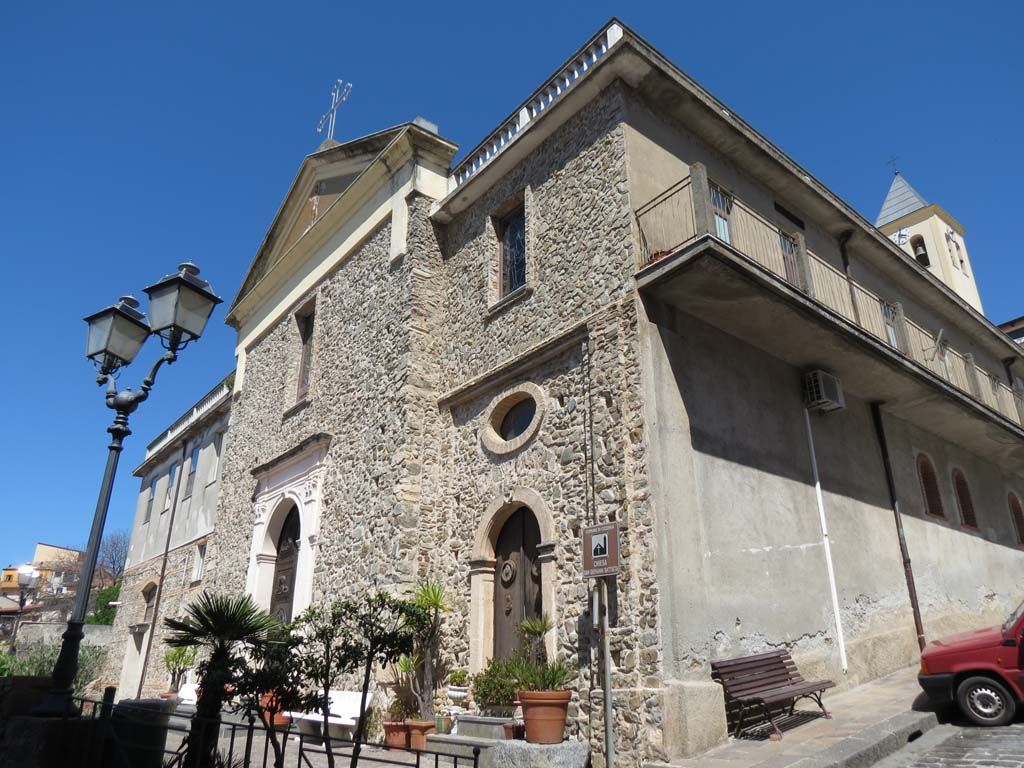
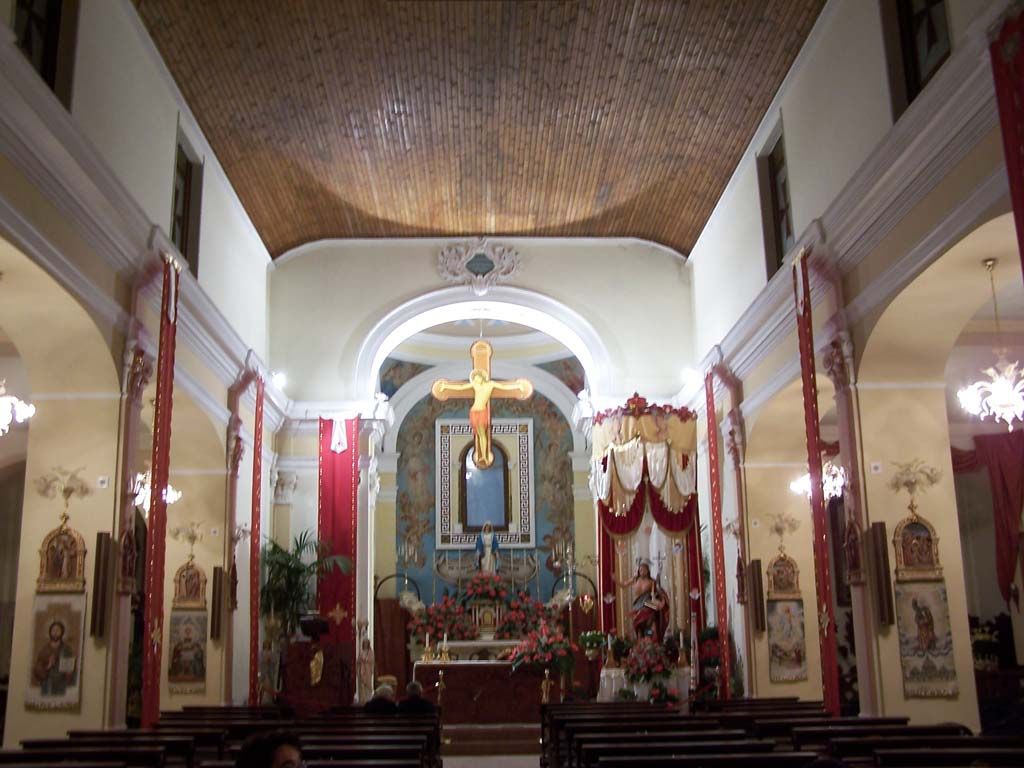
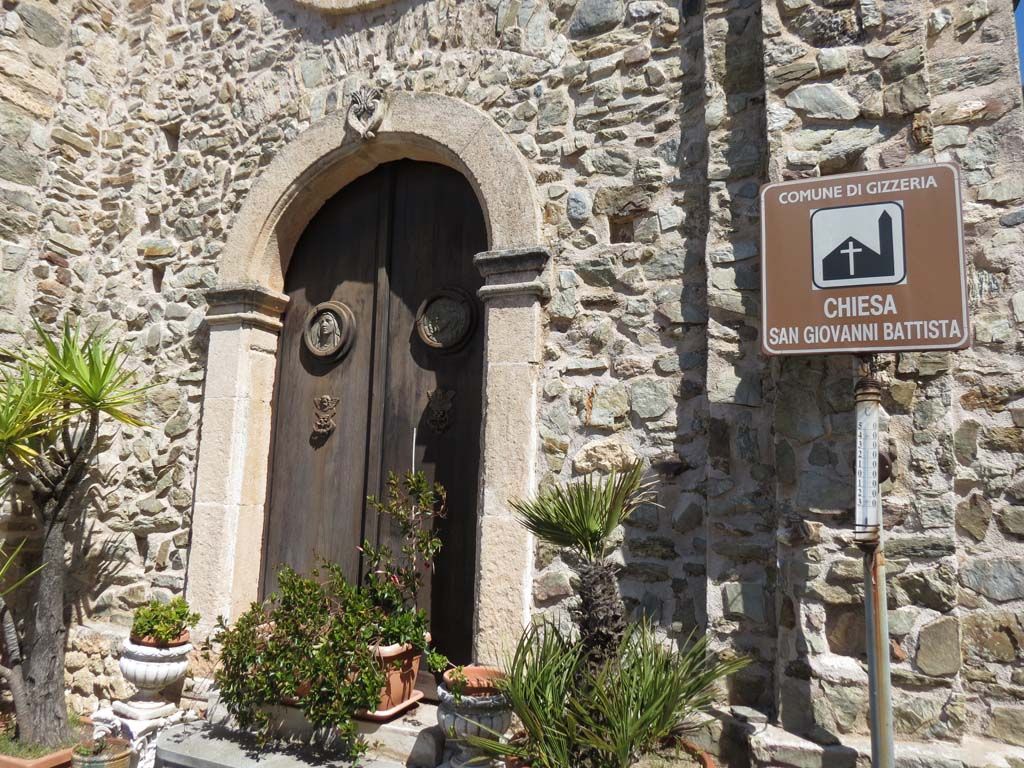
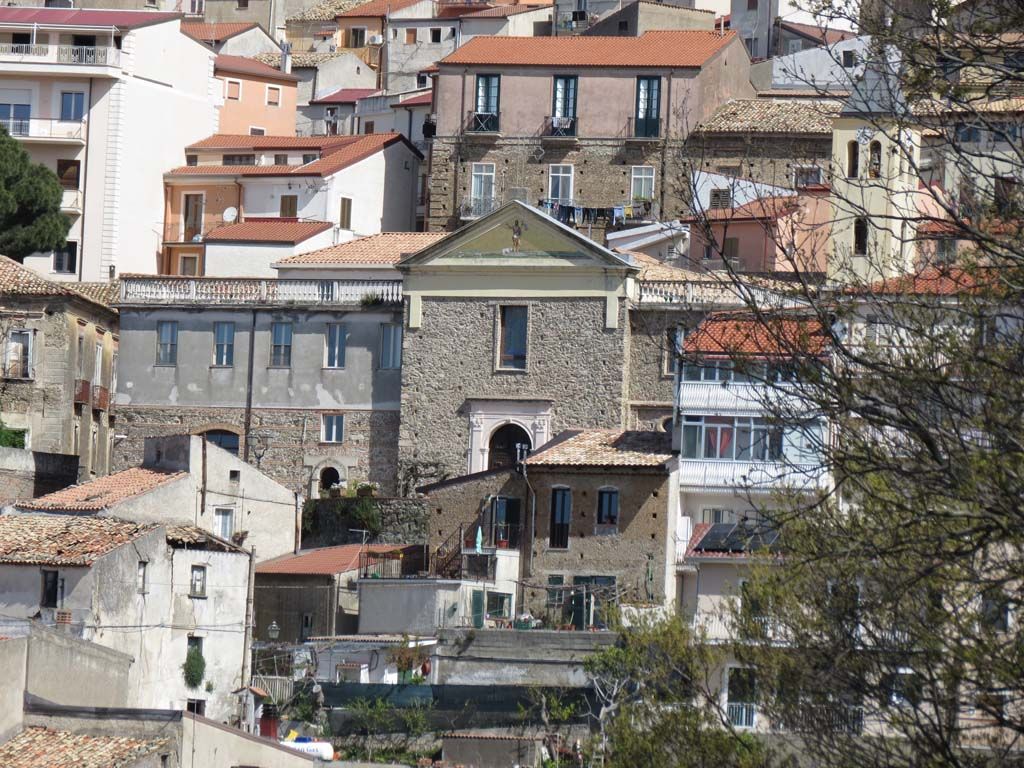
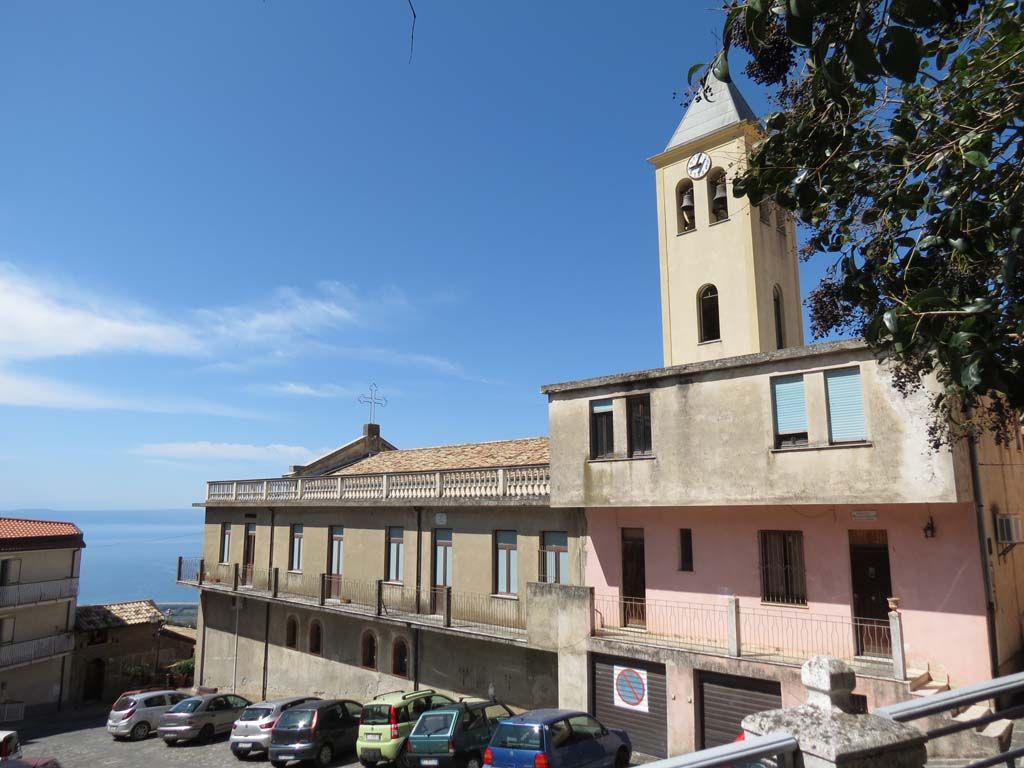
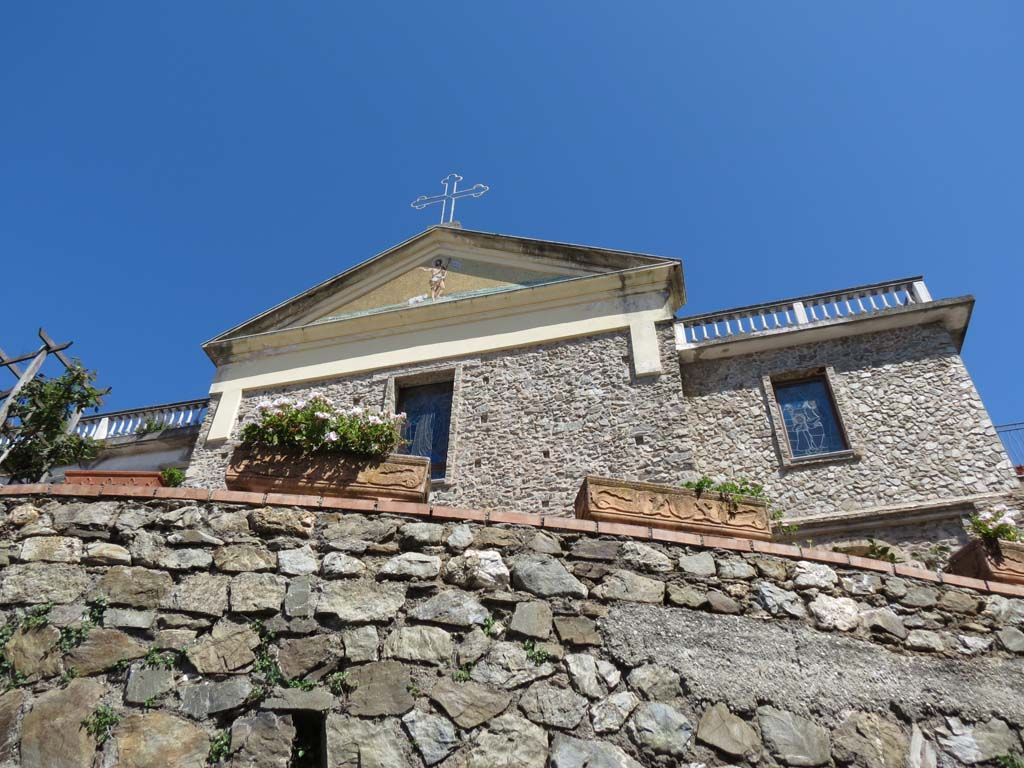
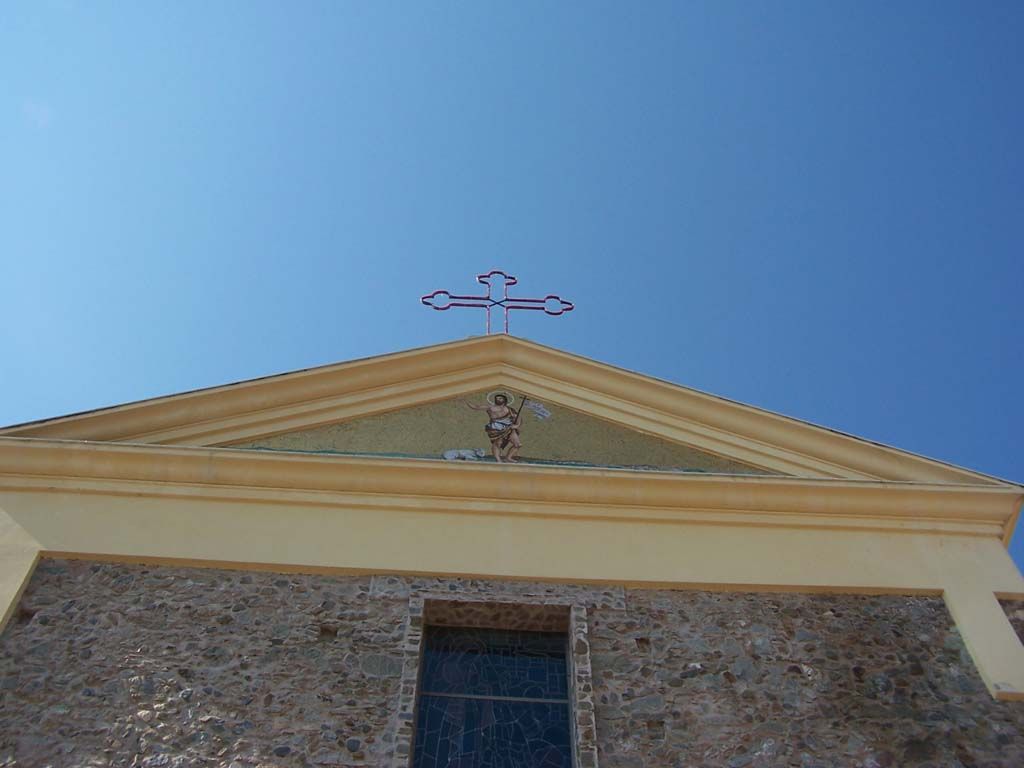
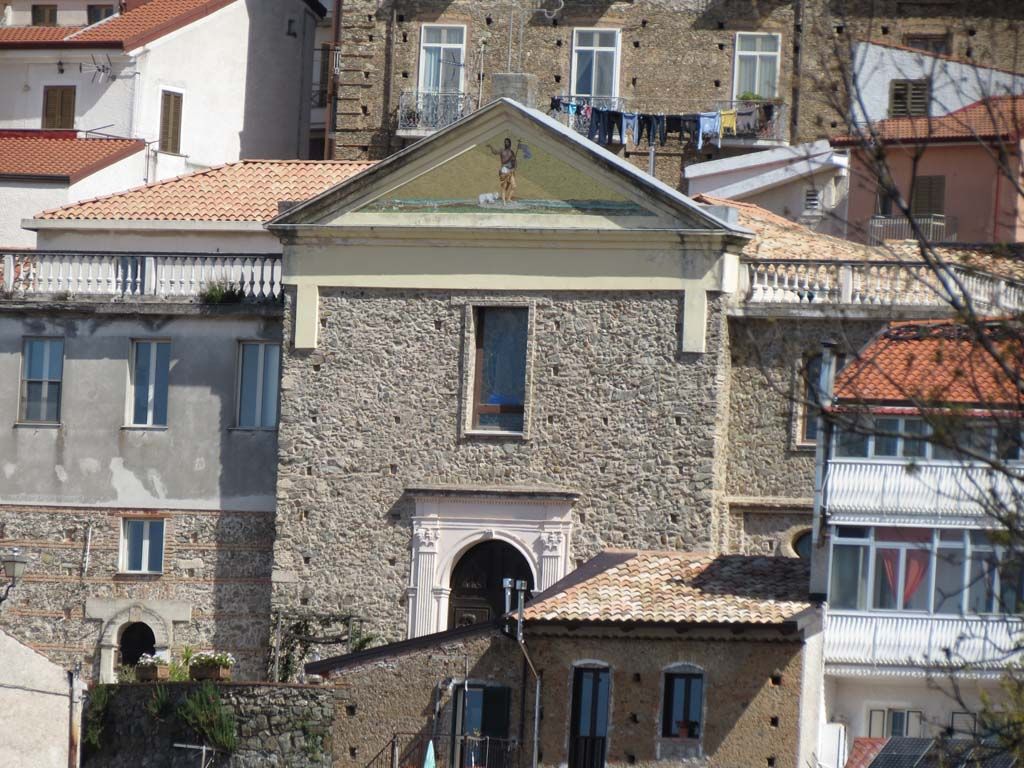
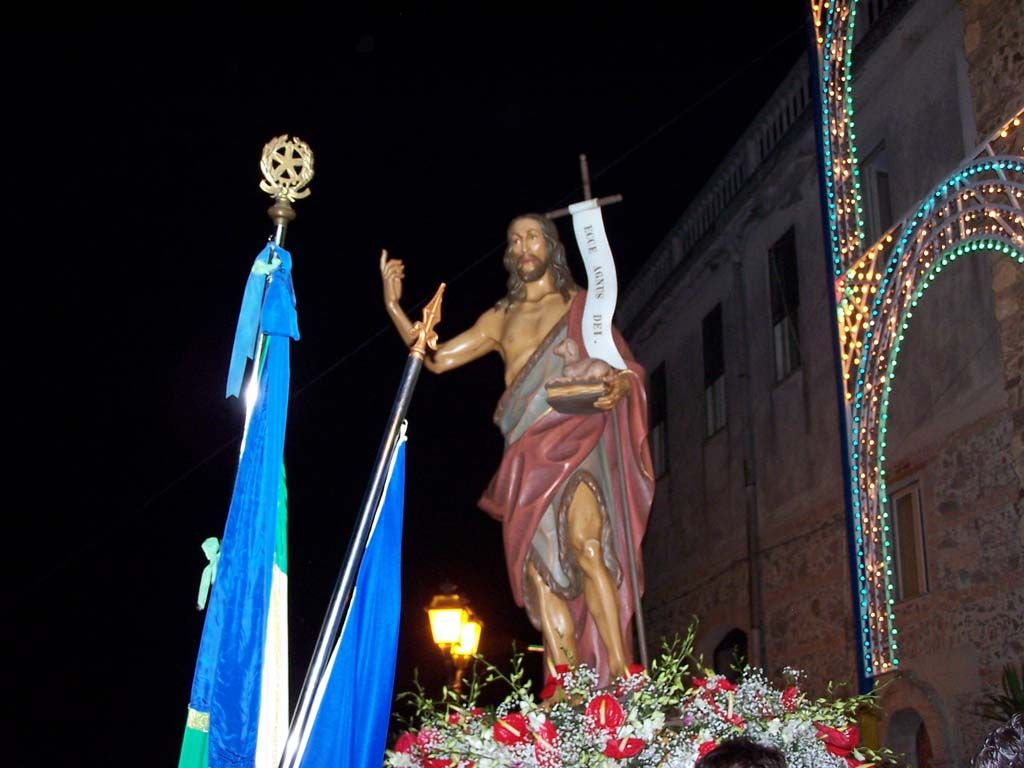
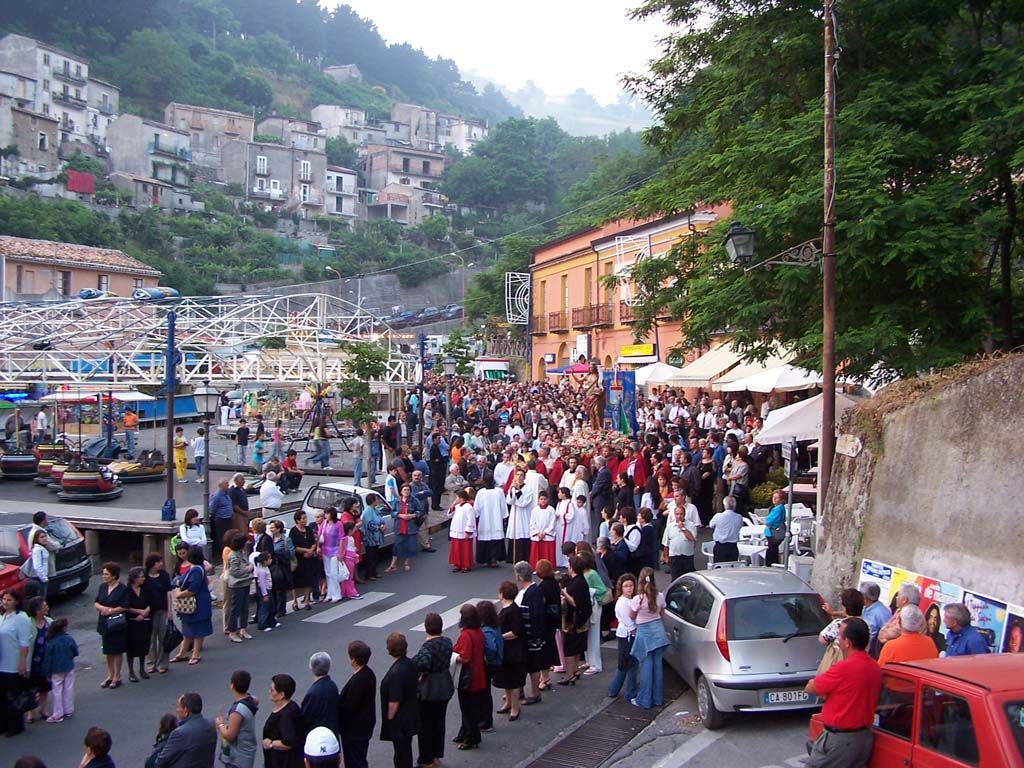

 IT
IT 